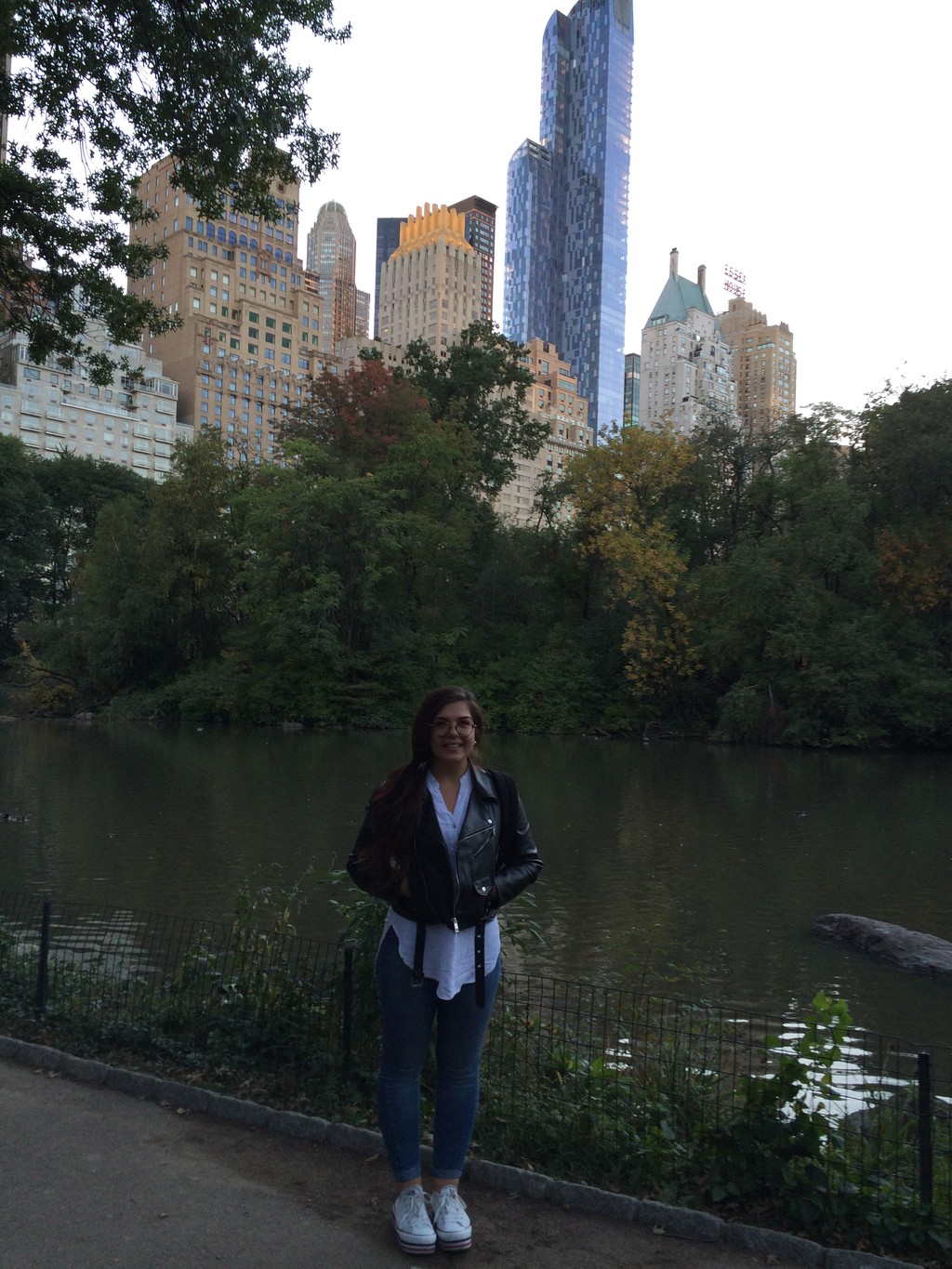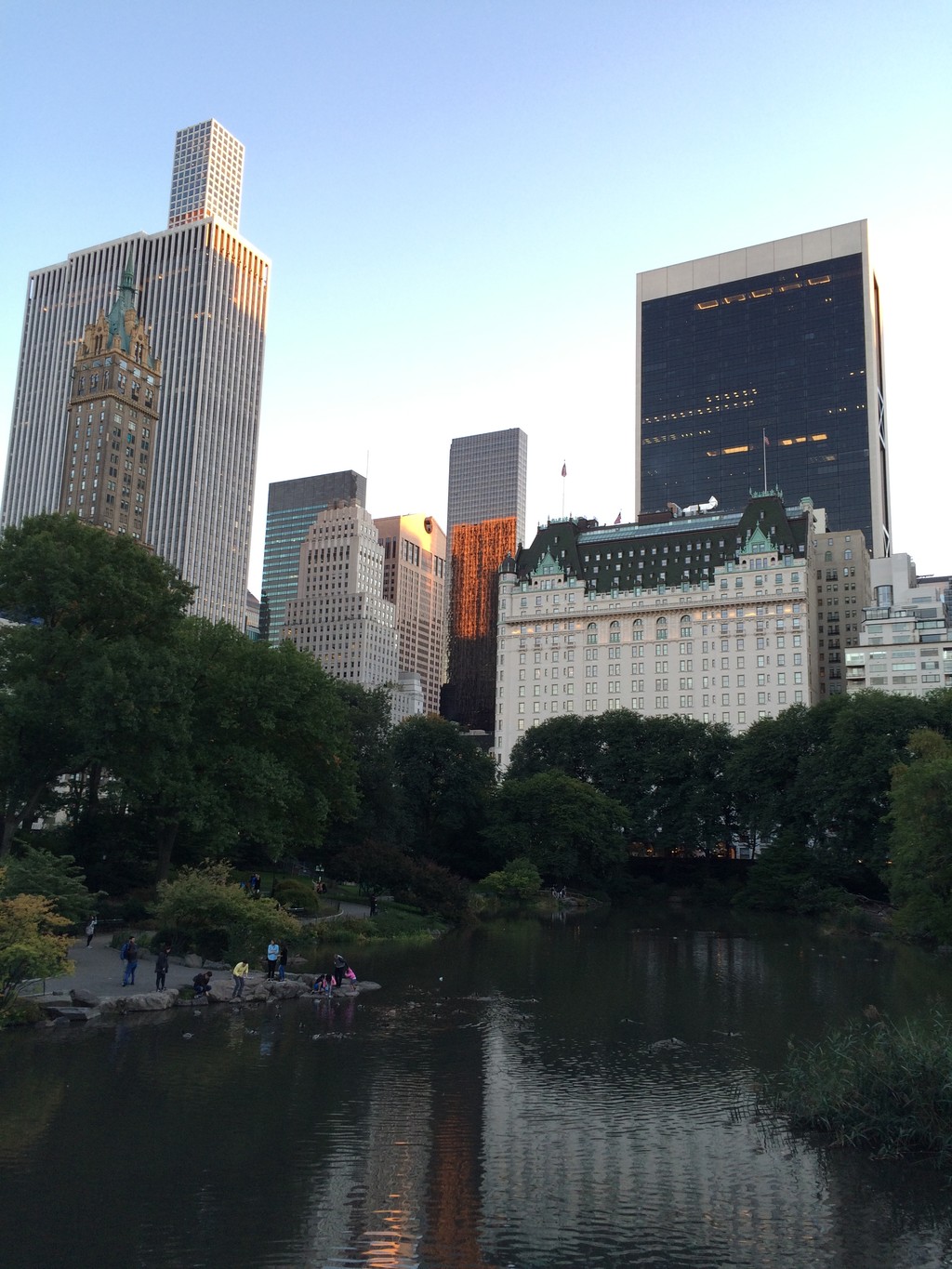The New York Central Park

The Central Park in New York is probably one of the most famous parks in the world (if not THE most famous one). It is situated in the middle of New York City, in Manhattan.
There is hardly any place that I can think of that appears in more movies than the Central Park of New York. But what makes it so special? Well, first of all it is a huge natural surrounding in the middle of an enormous city. When you stand inside the park you would never think that you are still in the over 8 million people city that you were just 5 minutes ago. Just a look up reminds you of all the high buildings around you, because in the park itself it is so peaceful and calm.
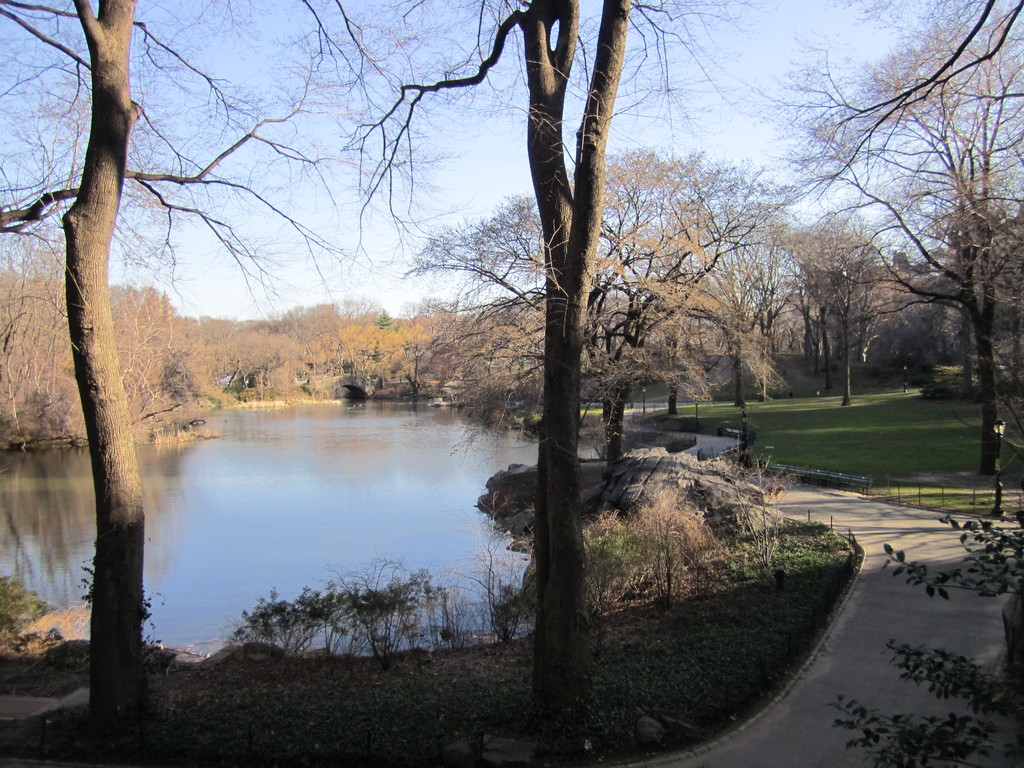
To me the Central Park is a place that I can never get sick of walking through, and actually you could walk for a long time in there because it is really incredibly big. It already takes one hour to walk from one end to the other, and then you haven’t seen all of it yet! So if you count in an afternoon for the Central Park in your travel plans it isn’t exaggerated at all.
There is actually tons of stuff to see and do in this park. There are beautiful bridges, lakes and gardens. It has plenty of benches to sit down and relax and for the more sporty people, it is a great place to go for a run or take a bike ride. They also have a zoo and big stages where they host open air concerts in summer. And in winter you can go ice skating on the famous Wollman Rink (also known from many movies).
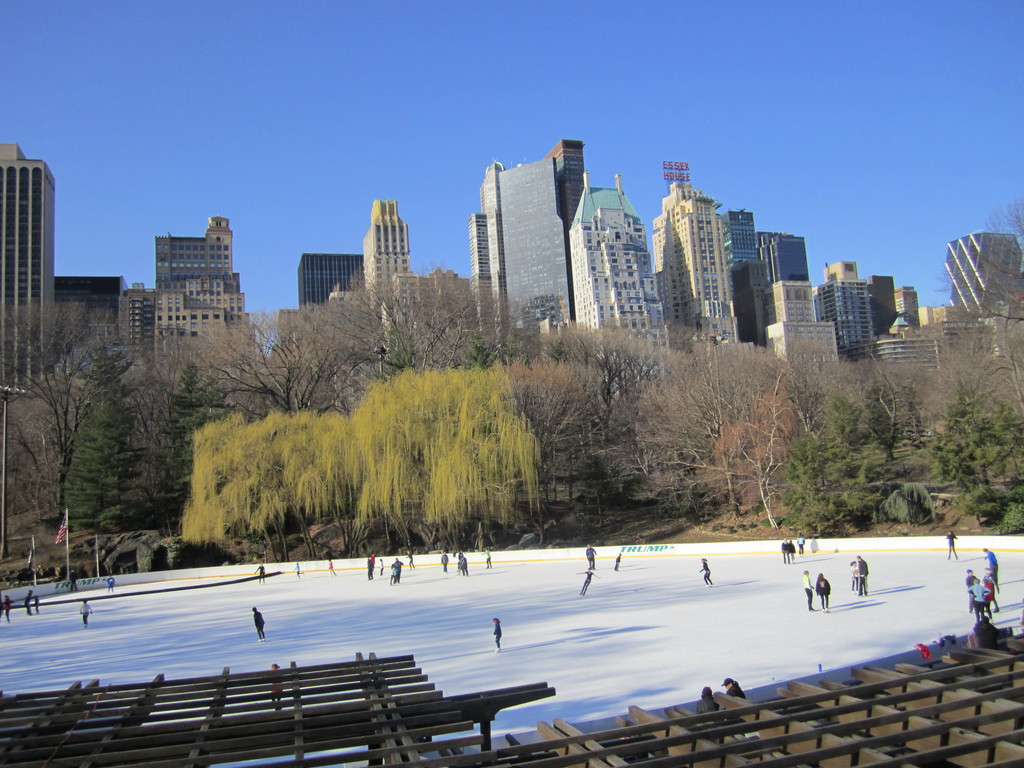
Next to the usual tourists walking around you will also see many people taking their dogs for a walk, parents enjoying the nature with their kids and people going for a run. If the weather is nice you can see people gathering on the big grass areas of Central Park (for example Sheep Meadow), where they meet family and friends, lay in the sun or have a pick nick. Also there are some sport fields where you can see people playing Baseball or Basketball. Also the yearly New York Marathon, the biggest marathon of the world, that attracts thousands of sportsmen every year, goes through the Central Park.
If you want to get a view on the Central Park from the top and you can’t afford one of the expensive hotels bordering to the park you should go take a look from the Rockefeller Center. The view from there is in general pretty amazing, but also you can get a spectacular view on the whole Central Park, which looks just breathtaking, a stripe of nature in the middle of an ocean of buildings.
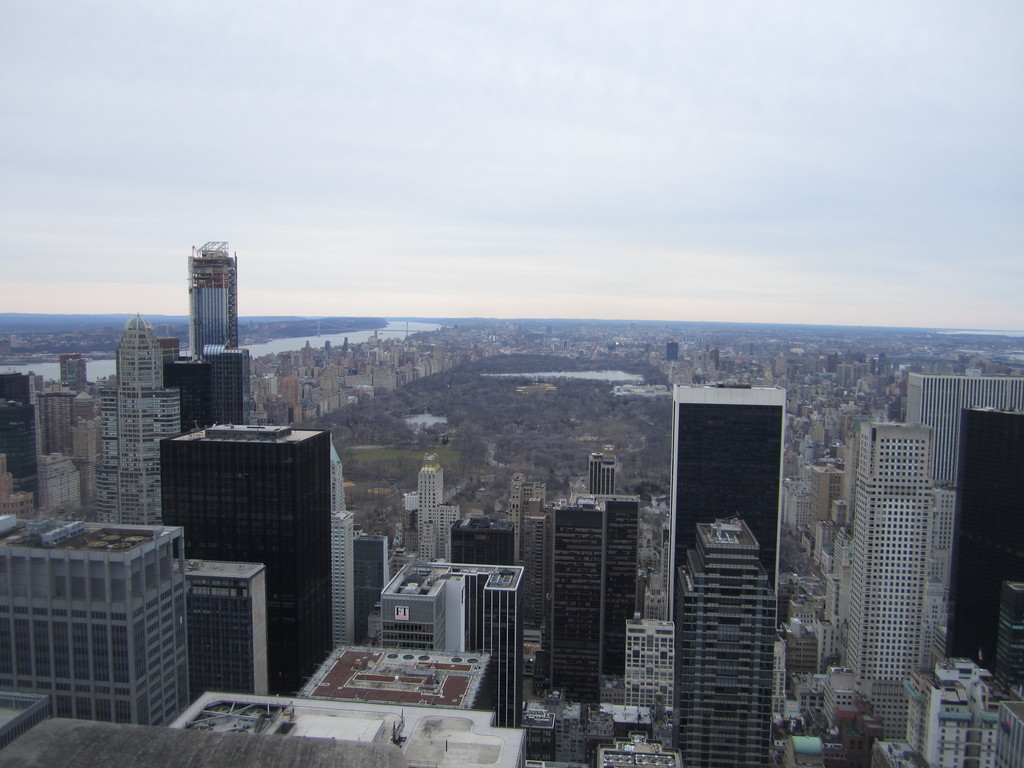
The Central Park: A wonderful retreat in the city. If you want to get out of the craziness of New York and relax for a while, take a walk and discover all the things this place has to offer. A must-see in the city that never sleeps.
Photo gallery
Content available in other languages
- Español: Central Park de Nueva York
- Français: Le Central Park à New York
- Türkçe: New York Central Park
- Italiano: Central Park di New York
- Polski: Central Park w Nowym Jorku
- Português: O Central Park de Nova Iorque
Central Park
The park is made up of several lakes, theatres, ice rinks, fountains, tennis courts, baseball fields, many playgrounds and other facilities. It is also home of the Central Park Zoo and the Metropolitan Museum of Art. Especially during weekends, which is when cars are not allowed in the park, Central Park is an oasis in this hectic city.
A little bit of history
When the grounds of the park were bought by the city of New York in 1853, it was far from what it is today. It was located somewhere between the city of New York and the village of Harlem. The area was made up of settlers residing in sheds, quarries, pig farms and swamps.
In 1857, the city of New York organized a competition for the design of this new park, which was in competition with the major parks of London and Paris. A design by Frederic Law Olmsted and Calvert Vaux, called 'Greensward Plan' was chosen.
This plan featured an English-style landscape with large meadows, several lakes and hills. Winding footpaths were separated from the main roads and the large number of trees ensured the city buildings were not visible from inside the park.
To convert the swampy area in the park, designers had planned several hundreds of thousands of trees to be planted, more than 3 million cubic meters of earth to be removed, roads and bridges were built and a large deposit was excavated. It took more than 15 years before the 20 000 workers had completed the park.
Central Park immediately became a popular place for all New Yorkers, attracting millions of visitors each year.
It was Frederic Law Olmstead's aim to create a place where people could relax and meditate. He saw the park as a kind of social experiment where people from the upper and lower two classes would meet, a fairly revolutionary idea at the time.
Following the appointment of Robert Moses in 1934 as the New York City Parks Commissioner, the park's focus shifted from relaxation to recreation.
During the tenure of his 26 years, Moses built many sports facilities, playgrounds and the Wollman Rink. He also renewed the Zoo, and installed several sculptures including 'Alice in Wonderland'.
After the departure of Moses in 1960, Central Park began to decline. Tourists and citizens visiting the park were confronted with graffiti, garbage and crime. In the 1970s, the park was a symbol for the decline of New York city.
The tide began to turn in 1980 when a group of citizens created the Central Park Conservancy. Working together with the city, they began a renovation project of 50 million dollars. Various parts of the park, including Sheep Meadow and Bethesda Terrace were restored. Three employees were hired to remove graffiti - it took them three years to complete this task. The crime was also reduced with the deployment of a large police force.
Thanks to the efforts of the city and private groups, Central Park is now a relatively clean and safe place, visited by over 30 million people each year.
Structure
There is much to see and do in Central Park. Sports facilities can be found throughout the park, but most attractions are in the lower half of Central Park. You will find historic buildings, statues, monuments, beautiful bridges, and of course plenty of nature. Some of it is quite uneven such as the Ramble and Lake, while other parts of the park are better kept and have beautiful flowers and shrubs.
There are eighteen closed entrances in the park. Each of them has its own name. Several of these doors are decorated such as Vanderbilt Gate, Engineers Gate and in particular Merchants Gate at Columbus Circle.
Many people enter via the Scholars Gate at the Grand Army Plaza, near Fifth Avenue, which leads to a pretty pond with a beautiful stone bridge.
Attractions
Further north in the park, is one of its most popular attractions: Central Park Zoo. The zoo has divided into several regions as a tropical zone and the polar circle exhibitions. Some of its popular residents include polar bears, snow leopards, red pandas and penguins. Just north of Central Park Zoo zoo is Tisch Petting Zoo, where young children can visit and touch pets.
West of the Central Park Zoo is the Dairy, a Victorian styled house created in 1870. The picturesque building houses a visitor centre where you can get maps, guides, gifts, and information about events that have been scheduled in Central Park. Dairy is located in an old pasture, where cows grazed to provide fresh milk for the children of the city, hence the name of the building.
The Mall, a wide avenue lined with American elm trees, leads you to Bethesda Terrace, one of the architectural monuments of Central Park. The terrace has a covered series of arches flanked by two stairways leading to a square. The central point of the square is the Bethesda Fountain, built in 1873. The statue of the fountain, the Angel of the Waters, was created in 1842 by Emma Stebbins to commemorate the opening of the water system of Croton, the first time New York was provided with clean water. Bethesda terrace overlooks the lake and the Loeb Boathouse, where you can rent row-boats or even a gondola.
Navigation remote control enthusiasts can go to Conservatory water, a pond located east of El Lago. There are two statues near the pond which are very popular among children. On the west side of the lagoon is a statue of Hans Christian Andersen, while a sculpture of Alice in Wonderland and his friends is just north of Conservatory Water. Children love to climb the giant mushroom. Another famous statue in Central Park is Balto, a Siberian Husky sled dog who in 1925, helped transport medicine through Alaska to deliver necessary supplies to stop a deadly outbreak of diphtheria.
West of the Mall is one of the largest open spaces in Central Park: Sheep Meadow, an expansive meadow popular in summer for sunbathing. The Great Lawn, which is further north and in the geographical centre of Central Park, is even greater. The oval lawn, created in 1937, often hosts free summer concerts.
The most important monument in Central Park is Cleopatra's Needle, an authentic Egyptian obelisk, located east of the Great Lawn. The 20 meters tall granite obelisk was originally built in Heliopolis, and later moved to Alexandria. In the mid-nineteenth century, it was donated to the US, as a gift from Egypt.
The obelisk is near the Metropolitan Museum of Art, one of the most important museums in the world, with a huge collection of artworks from all continents, covering the prehistoric period to the present day.
Strawberry Fields is a memorial garden located near the entrance to Central Park on 72nd Street. It was created in honour of John Lennon, who was shot dead in front of the Dakota apartments where he used to live. The teardrop-shaped garden was declared in 1985 as a peace garden. Named after a Beatles song written by John Lennon, Strawberry Fields.
The famous mosaic with the word Imagine (another song by Lennon) was a gift from the city of Naples in Italy.
There are many bridges in Central Park - each with a unique design. One of the most interesting is the 18 meters (60 feet) long cast iron arch bridge that spans from the lake in Cherry Hill, near Bethesda Terrace and The Ramble, to 15 hectares (38 acres) of a large forest. This is the most natural part of Central Park, with narrow paths winding through thickets of trees. This is a popular spot for bird watching: The Ramble is located beneath a transatlantic migration bird path and over 250 different bird species have been seen here.
Just north of The Ramble is the Belvedere Castle, situated at the highest point of the park. The castle was created in 1869 as a watchtower after a design by Calvert Vaux. The tower overlooks Turtle Pond, named because of the many turtles that live here.
The Shakespeare Garden was created in 1913 which was formerly known as the Garden of the Heart. Three years later, on the 300th anniversary of Shakespeare's death, it was devoted to the famous writer. The garden features plants mentioned in Shakespeare's plays. Stairs connect the garden to the Swedish Cottage, a replica of a nineteenth century Swedish school. It was transported to Philadelphia on the occasion of the Centennial International Exhibition of 1876 and eventually ended up here in Central Park in New York.
The top of Central Park is less visited and there is less interesting places to see. An important exception is the Conservatory Garden, the only garden in Central Park with a formal design. It is divided into three sections: a garden of Central Italian style, a French-style garden in the north and English-style garden in the south. The gardens are adorned with several beautiful fountains, including the "Three Dancing Maidens", which was created in 1910 by the German sculptor Walter Schott.
Further north, on the border of Harlem, Harlem Meer is one of the largest lakes in Central Park. The beautiful Victorian building near the lake is much younger than it seems: it was built in 1993. It is home to the Charles A. Dana Discovery Center, an environmental education centre aimed at families and children.
Content available in other languages
- Español: Central Park
Rate and comment about this place!
Do you know Central Park? Share your opinion about this place.







